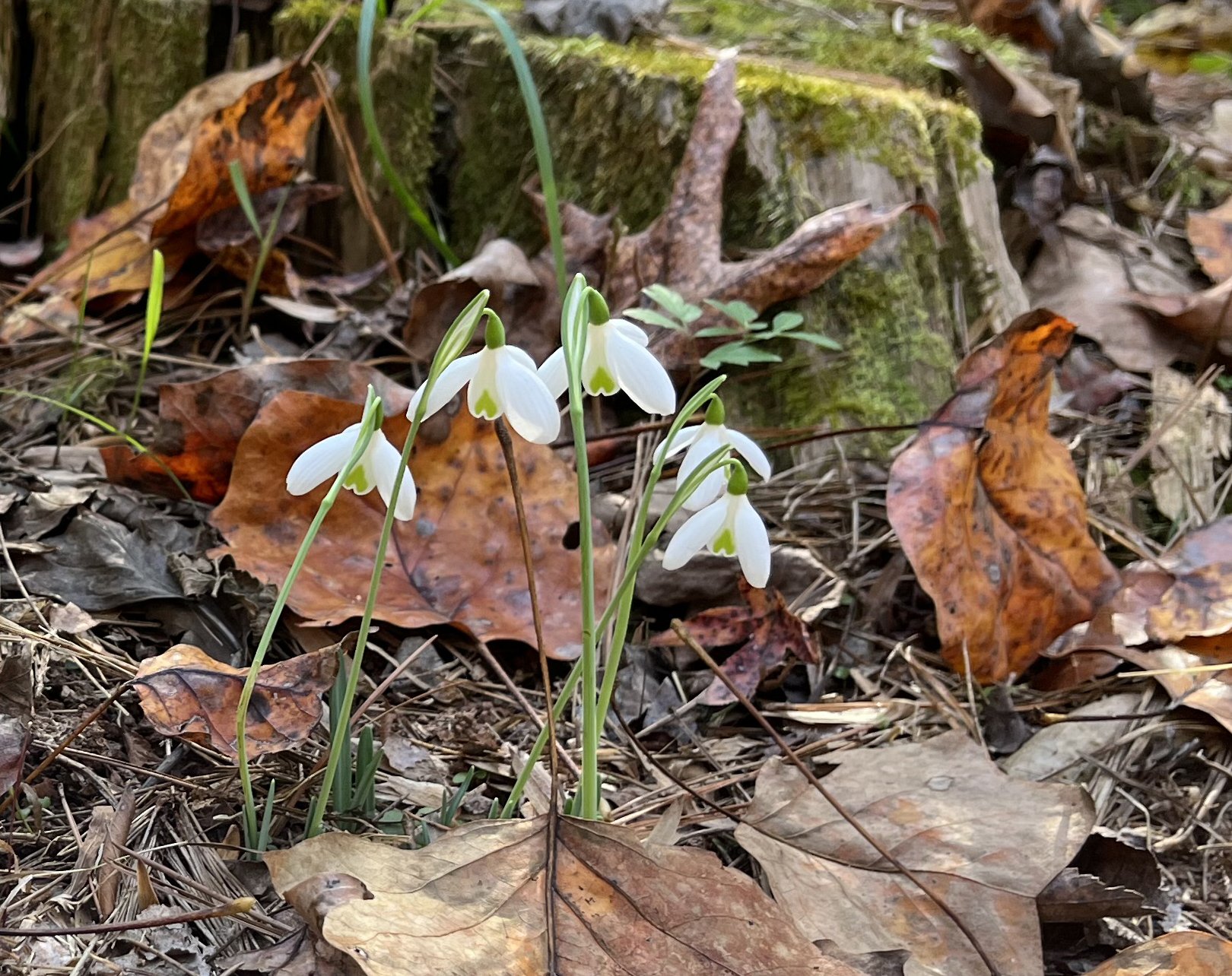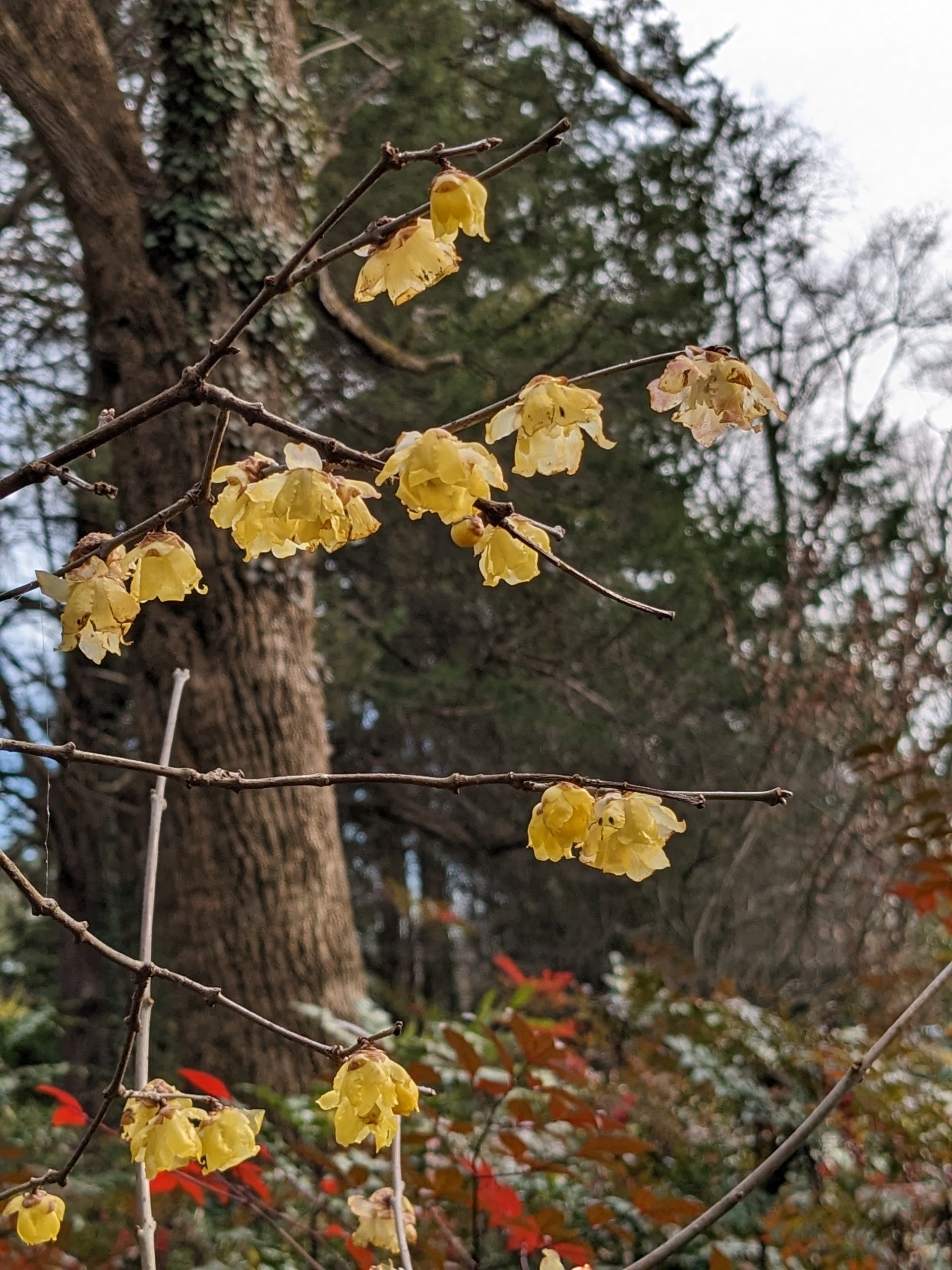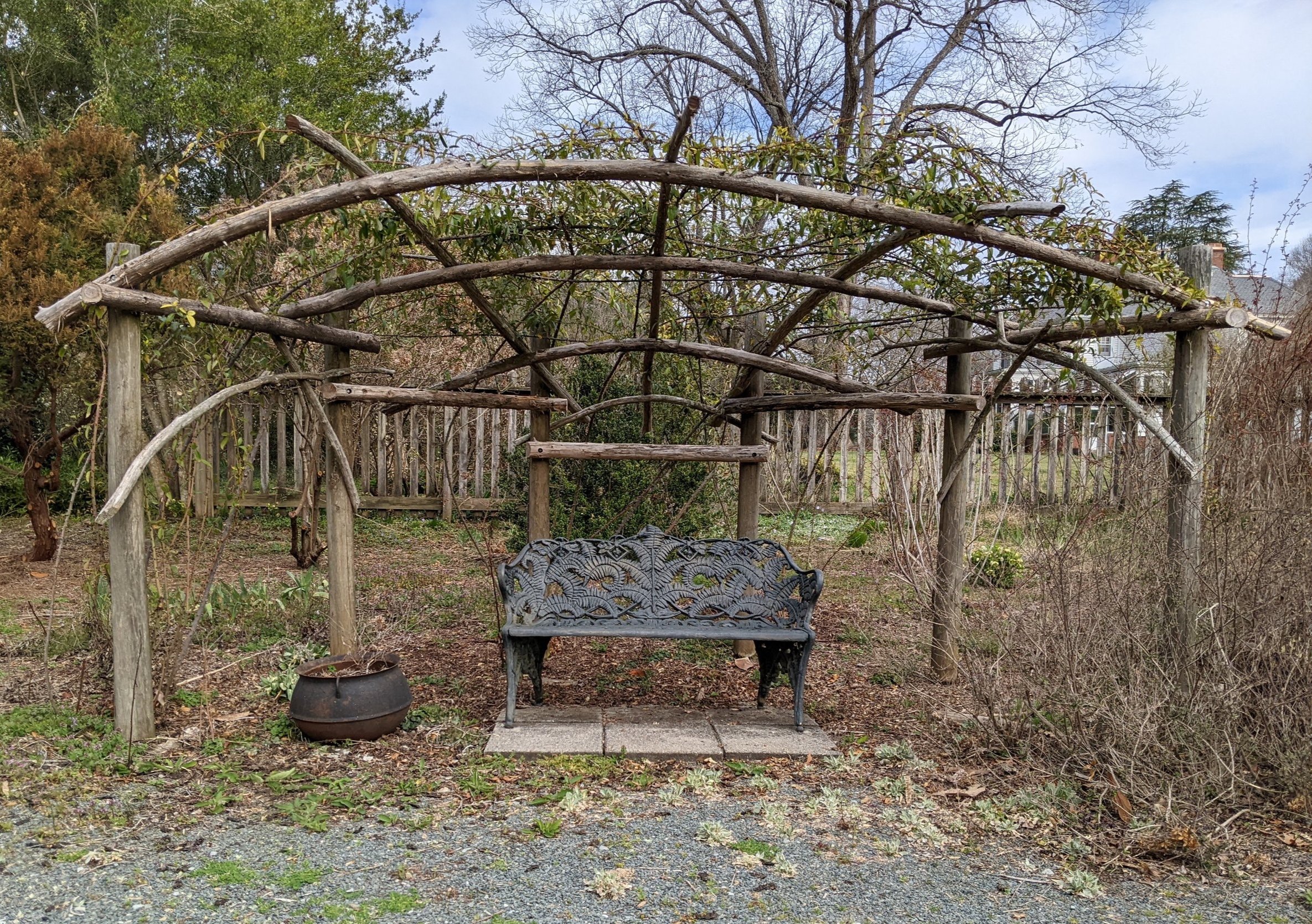Berries
Ilex cornuta
Ilex opaca
Ilex vomitoria
Ilex decidua ‘Council Fire’
Ilex decidua ‘Finch’s Golden’
Ilex decidua ‘Pocahontas’
Nandina domestica, red or yellow berries
Ruscus aculeatus
Flowers
Iris unguicularis
Narcissus (Tazetta type)
Verbena canadensis, mauve and white
Helleborus foetidus
Helleborus niger
Helleborus x hybridus
Sarcococca
Erica x darleyensis
Cyclamen coum
Phlox subulata
Crocus imperati
C. imperati ‘de Jager’
Crocus sieberi, white
Camellia japonica
Jasminum nudiflorum
Primula vulgaris
Galanthus elwesii
Galanthus elwesii ‘Mrs. Macnamara’
Galanthus elwesii ‘Comet’
Narcissus romieuxii ssp. albidus
Enemion bitternatum
Chimonanthus praecox
Chaenomeles ‘Crimson and Gold’
Mahonia x media ‘Winter Sun’
























